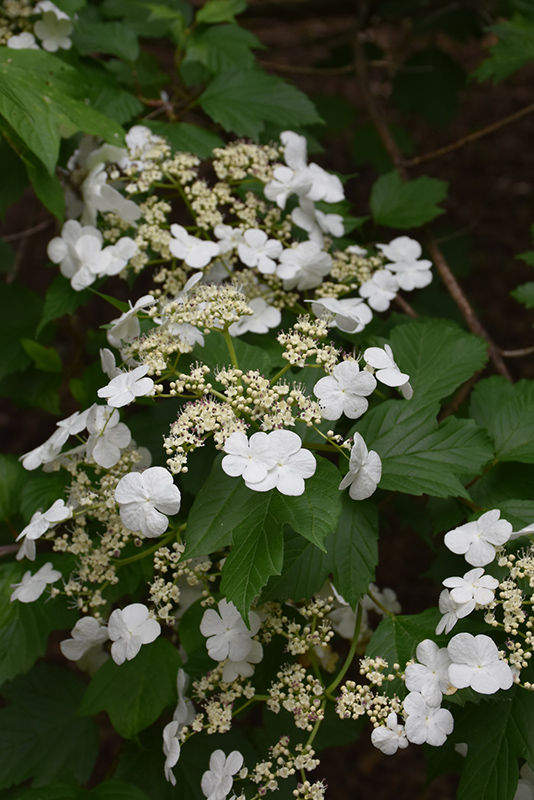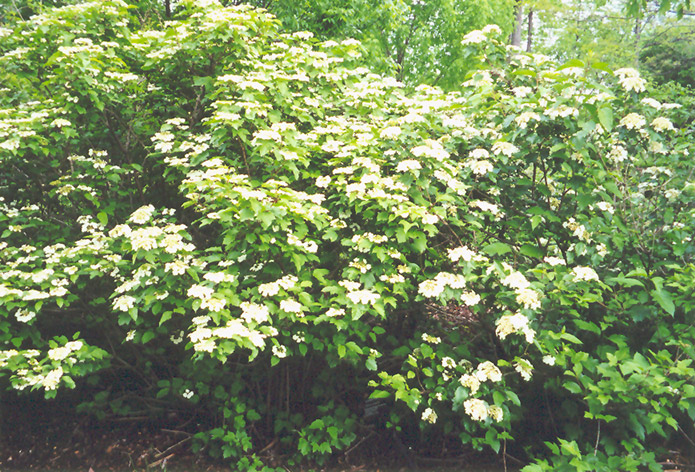PLANT FINDER
Height: 15 feet
Spread: 15 feet
Sunlight:
![]()
![]()
Hardiness Zone: 3a
Description:
A wonderful tall and spreading shrub, with showy clusters of snowy white pinwheel-like flowers in spring followed by brilliant red fruit in fall and good fall color; hardy and adaptable, makes a great specimen or tall natural screen, will grow quite large
Ornamental Features
Sargent's Viburnum is blanketed in stunning creamy white lacecap flowers held atop the branches in late spring. The red fruits are held in abundance in spectacular clusters from late summer to late winter. It has dark green deciduous foliage which emerges purple in spring. The large serrated lobed leaves turn an outstanding red in the fall. The smooth gray bark and gold branches add an interesting dimension to the landscape.
Landscape Attributes
Sargent's Viburnum is a multi-stemmed deciduous shrub with an upright spreading habit of growth. Its relatively coarse texture can be used to stand it apart from other landscape plants with finer foliage.
This is a relatively low maintenance shrub, and should only be pruned after flowering to avoid removing any of the current season's flowers. It is a good choice for attracting birds to your yard, but is not particularly attractive to deer who tend to leave it alone in favor of tastier treats. It has no significant negative characteristics.
Sargent's Viburnum is recommended for the following landscape applications;
- Accent
- Mass Planting
- Hedges/Screening
Planting & Growing
Sargent's Viburnum will grow to be about 15 feet tall at maturity, with a spread of 15 feet. It tends to be a little leggy, with a typical clearance of 3 feet from the ground, and is suitable for planting under power lines. It grows at a medium rate, and under ideal conditions can be expected to live for 40 years or more.
This shrub does best in full sun to partial shade. It prefers to grow in average to moist conditions, and shouldn't be allowed to dry out. It is not particular as to soil type or pH. It is highly tolerant of urban pollution and will even thrive in inner city environments. This species is not originally from North America.



